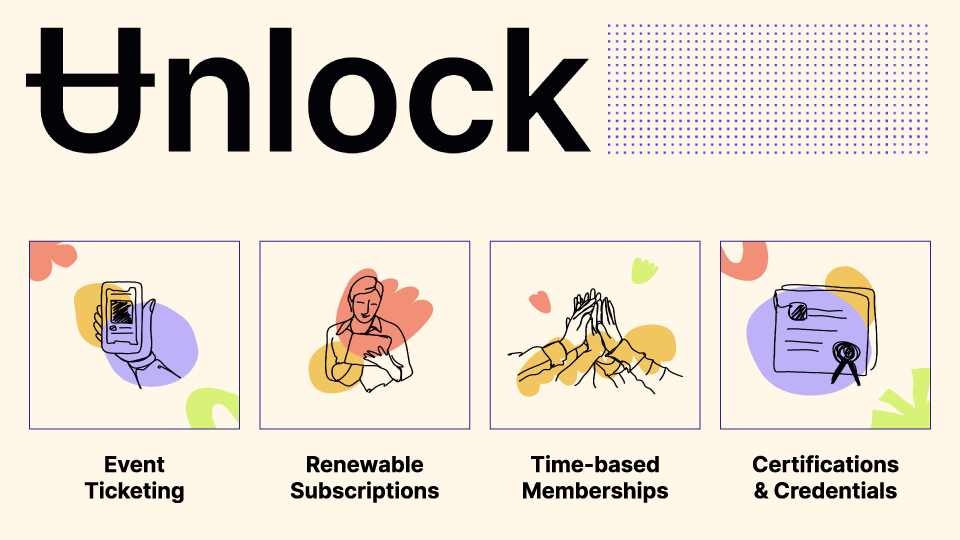
How On-Chain Analytics Will Disrupt Business Reporting Forever
On-chain analysis is the superpower of the future
No time to read? Listen to Kyle break down on-chain analysis through your favorite podcast platform 👇
GM web3 DOers!
On-chain analysis is one of the most powerful tools in web3.
It allows us to dive deep into companies, projects, DAOs, and more to uncover the trends, user activity, financial health, and overall performance of a particular entity. It gives power back to the people where previously most business data is locked tightly behind private servers. 🔒
But times are changing.
In this Deep Dive, I break down:
- What on-chain analytics is and what’s wrong with current business reporting ⛓️
- The main ways on-chain analysis will improve data access ✅
- How we can leverage on-chain analysis to improve our decision-making 🤔
Let’s dive in.
What Is On-Chain Analytics?
On-chain analytics refers to the process of analyzing transactions and other data that is recorded directly onto a blockchain.
Remember, a blockchain is essentially an open, permissionless, and transparent ledger. Everything which uses the blockchain (ie. non-fungible tokens, fungible tokens, wallets, smart contracts, etc.) has a unique ID that can be tracked by anyone at any time.
This can include analyzing the volume of transactions on a blockchain, tracking the movement of tokens between addresses, the activity on a specific application or protocol, and identifying patterns or trends across blockchain use cases.
For example, we can view and analyze any of the on-chain data from OpenSea, such as its monthly fees generated or NFTs sold.
On-chain analysis also allows us to look at this volume on specific blockchains, i.e., Solana, Ethereum, Polygon, etc.
Being able to understand, analyze, and ultimately turn on-chain data for protocols, applications, collections, and companies into valuable insights will be the superpower in the coming decades. Rather than speculating, it allows you to understand exactly what’s happening in the space.
The problem is that on-chain analysis is tricky—especially if you’re not a technical person. 😵💫
But, we don’t want you to miss out on insights that will shape your web3 strategies, so we’re doing all the hard work for you—which is exactly why we created Web3 Academy PRO!

ABOUT PRO
PRO is the premier resource that combines on-chain analysis with industry insights for DOers like you who want actionable, digestible reports delivered straight to their inboxes each week.
The first Web3 Academy PRO report was launched last week and the feedback has been incredible thus far, especially over the weekend!
We initially offered 100 PRO spots at a 50% discount (expecting these to last until the end of this month) but 83 spots are already gone… 🤯
We now have only 17 spots left for DOers to secure a staggering 50% off PRO for life! 🚀
If you want to understand what’s actually happening in web3 (with on-chain analysis) and want to stay at the forefront of the space, Web3 Academy PRO is for you. ✅
Don’t miss out on the opportunity to go PRO today and lock in a 50% discount for life!
P.S. Substack might need your email before you can sign up.
The Current State of Business Reporting
In the current state of business reporting, traditional methods such as financial statements and annual reports rely on manual processes and data entry, which can lead to errors, manipulation, and delays.
Other issues include:
- Lack of transparency: Some companies are not transparent in their reporting, which makes it difficult for stakeholders to understand the true financial health of the business. On top of this, private companies, like Twitter, or governments aren’t obligated to report their financial metrics.
- Bias: There is potential for bias in business reporting, either intentionally or unintentionally. For example, a company may be more likely to highlight positive information and downplay negative information in its reports.
- Timeliness: Financial reports may not be published in a timely manner, which can make it difficult for stakeholders to make informed decisions.
- Lack of standardization: There is a lack of standardization in the way that companies report their financial information, which makes it difficult to compare the performance of different businesses.
However, blockchains offer a solution to these issues by providing a tamper-proof record of real-time activity that can be easily tracked and analyzed.
How On-Chain Analysis Will Change Business Reporting
On-chain transactions give us an insider’s view of companies, protocols, NFT collections, and even blockchains themselves.
This benefits users and entrepreneurs as they can easily analyze an entity of their choice at any time, helping them make better business decisions—such as choosing the right social platform to build their following on in the case of creators.
Some other reasons include:
Increased Transparency and Accountability
One of the primary benefits of on-chain analytics is increased transparency and accountability. By analyzing data that is recorded directly onto the blockchain, it is possible to see the performance of an entity (company, government, etc.) at any time we choose.
For example, we can see:
- The number of users interacting with a business through product purchases, membership programs, and more.
- The financial data for on-chain entities, such as their treasuries, balance sheets, and transaction history.
This level of visibility is important for building trust in the business and for ensuring that the company is operating as it should.
Without this transparency, we’ll continue to experience situations, such as the one with FTX, where everyone simply had to gauge SBF’s authenticity based on his persona.
However, if FTX was on-chain, it would’ve been much easier to realize that the exchange was operating in a risky manner rather than relying on his tweets.
More Accurate and Up-to-Date Data
On-chain analytics is also changing business reporting by providing more accurate and up-to-date data.
You can even head to Dune right now and browse real-time dashboards that were created by fellow web3 DOers, such as the one below of $BONK, the latest meme currency to hit web3.
By analyzing data recorded on the blockchain in real time, businesses can get a more accurate picture of their operations and make more informed decisions. This is particularly valuable in industries where information changes rapidly, such as the financial and technology sectors.
However, this is also important information for creators, entrepreneurs, and investors.
For example, investors can spot trends before they reach crypto Twitter (which is when the trend is usually about to die). On the other hand, creators and entrepreneurs can use this information to build new products or forge partnerships with projects that are gaining steam.
Improved Efficiency and Cost-Effectiveness
By automating the process of collecting and analyzing data, on-chain analytics can help businesses save time and reduce their reliance on manual labor.
One day we may even see the death of company reporting as we know it with company data being available at all times, rather than only during official releases.
Instead, on-chain reporting can free up resources that can be used for other tasks, such as strategy and innovation.
On top of this, transacting on a blockchain can improve the standardization of reporting (since pulling data on each respective chain is the same) while reducing the costs of maintaining proprietary databases.
🤝 Together with Unlock Protocol: NFT Ticketing is the Future. Learn How to Easily Create and Sell NFT Tickets for Your Next Event!⚡
How We Can Leverage On-Chain Analytics to Improve Our Decision-Making
One of the biggest unlocks of on-chain analytics is that it allows us to dive deeper into data from large entities that would otherwise be locked behind closed doors.
This allows us to make accurate and timely decisions about our own businesses where we previously had to rely on occasional reports (that may not include the data we need) or even no information at all.
In particular, there are three areas where on-chain analytics can help us improve our decision-making:
- On-demand financial reporting
- Marketing and customer analytics
- Supply chain management
Let’s break them down further.
On-Demand Financial Reporting
If a company transacts on-chain, anyone can access this data at any time. This means stakeholders can enjoy a clearer picture of the company’s financial health, helping to build trust and confidence.
On top of this, we’re free to analyze any piece of data on-chain whereas official reports only include information that the issuing entity deems important.
It also prevents entities from hiding negative information, such as a lack of financial reserves or declining revenues.
In 2022, we saw the real implications (some are still unraveling) of opaque financial reporting:
- FTX, arguably the largest culprit, used shady tactics to pump its native token’s valuation and then use it as collateral. On top of this, the exchange had back doors built in which SBF and others used to siphon funds from the company—not to mention the numerous “donations” to multiple entities.
- Celsius, a lending platform, promised users an almost 20% APY on stablecoins, such as UST (the now defunct TerraUSD). Consequently, the firm was forced to take risky bets to ensure they could live up to the outrageous yield they promised. But since we couldn’t see their investments on-chain, many investors are now stuck in a bankruptcy battle.
However, if these (and other centralized firms) were operating solely on a blockchain, users and on-chain sleuths would’ve caught wind of these poor tactics, limiting their downside.

Marketing and Customer Analytics
Right now the actions people take (whether that be posting on social media or buying a product) are hidden and stored in private company servers.
But as web3 unfolds, all of this will be fully transparent for anyone, unlocking an unbelievable amount of data.
Not only will we be able to analyze the financial health of companies, but we’ll also be able to do an in-depth analysis of who customers are and what they hold in their wallets.
Think about how important that is when people start to hold certifications, degrees, concert tickets, event tickets, and more in that wallet. We will know so much more about the people who are interacting with different protocols, companies, DAOs, etc.
This is a massive win for builders as they can gain a greater understanding of their audience and community, allowing them to create experiences and forge partnerships that their customers benefit from.
For example, on Dune you can find on-chain analysis of BAYC holders and the other NFTs collections that they’re buying and selling.
While this is good investment information (if you believe BAYC holders are good investors) because you can literally analyze purchases in real-time, it can also be used by Yuga Labs, the owners of the project.
Yuga can easily see what BAYC holders are interested in and partner with other projects for experiences, giveaways, and more.
Supply Chain Management
There are several problems with current supply chain reporting that can be addressed through the use of on-chain analysis.
One problem is a lack of transparency. It can be difficult for businesses to get a complete and accurate picture of their supply chain operations, particularly if they rely on manual processes and data entry. This can lead to inefficiencies and errors, as well as a lack of trust from stakeholders.
Another problem is the potential for fraud and corruption. Without a tamper-proof record of activity, it can be difficult to detect and prevent fraudulent activity within the supply chain.
A third problem is an inability to track and analyze real-time data. Traditional supply chain reporting relies on periodic updates, which can be outdated by the time they are presented. This can make it difficult for businesses to make timely and informed decisions.
On-chain analysis can help to address these problems by providing a tamper-proof record of activity that can be easily tracked and analyzed.
This gives businesses a more accurate and up-to-date picture of their operations, making it easier to identify inefficiencies and areas for improvement.

SOCIALS
Meme of the Week

The Question Is, Should This Data Be Publicly Available?
There’s no denying that on-chain transactions provide insight-rich data that we could’ve only dreamed of accessing before blockchain technology.
While it’s extremely beneficial to those outside of public and private corporations since we can decide for ourselves whether they’re acting in our best interests or not, what about user privacy?
One of the big reasons that people champion web3 is because corporations don’t control or own user data. However, if everything is publicly available, doesn’t it negate one of the benefits of web3?
Some people may believe so. But with tools, such as zero-knowledge cryptography, no one will be able to tie pieces of data to a particular person or entity, ensuring user privacy.
Outside of that, on-chain analytics is poised to change the power dynamics of business reporting. No longer will companies be able to serve the information they deem important. Instead, people themselves will be able to decide what data they want to glean from an organization.
And that’s exactly what we’re doing with Web3 Academy PRO!
👉 So if you want to understand what PRO is about, check out our latest report, on the future of social media, Lens Protocol where we dive into the social graph’s user growth & activity.
That’s it for now, frens. See you next time. ✌️
P.S. Don’t wait… There are only 17 spots left to go PRO with a 50% lifetime discount!
ABOUT THE AUTHOR
Kyle Reidhead
Founder of Web3 Academy and Impact3
Find him: Twitter

FOR THE DOERS
Take Action & Level Up
LEARN
Take our FREE Web3 Rabbit Hole Course to get up-to-speed on the foundational components of Web3 so you can confidently build, work, or use the fastest growing technology in history.
READ
Check out our first on-chain report on Lens Protocol’s User Activity and Growth.
JOIN
Head over to the Web3 Academy Discord to share your thoughts and stay up to date on all things web3!











